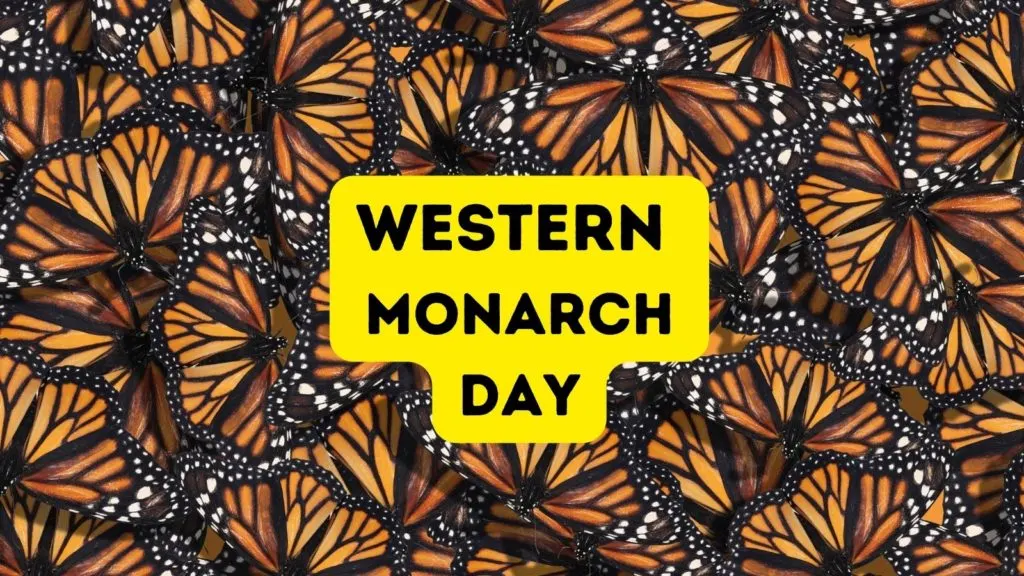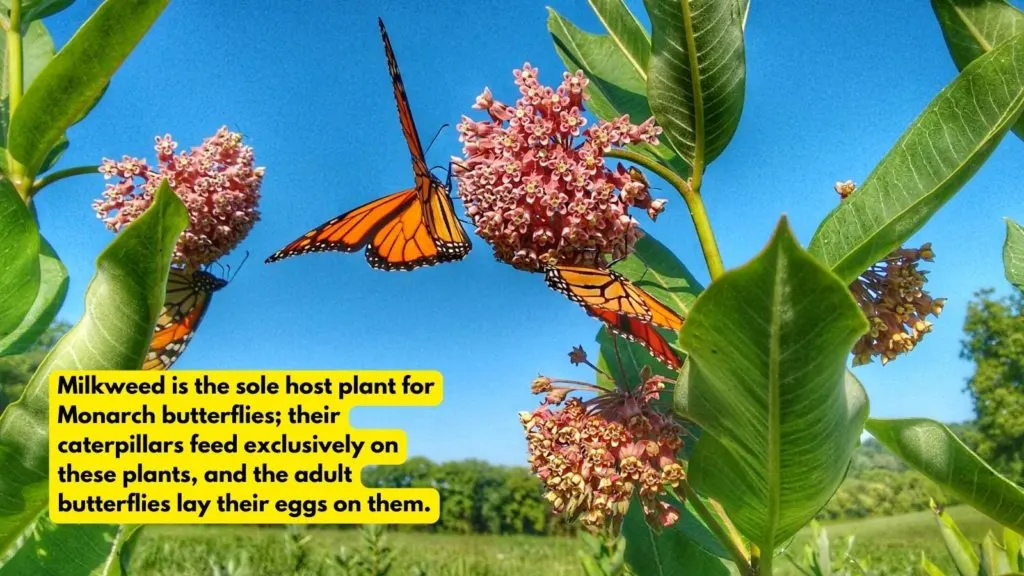Western Monarch Day is a day dedicated to celebrating and raising awareness about the Western Monarch butterfly, a key pollinator and an iconic species in the ecosystems of the western United States. This day serves as a reminder of the intricate relationship between these butterflies and their environment, including their impact on various bird species.

When is Western Monarch Day?
Western Monarch Day is observed every year on February 5. The day began in 2004 when it was declared by the California State Legislature as California Western Monarch Day. The day was selected because it was the time when the largest population of Western Monarchs was found in the state.
The Plight of the Western Monarch
The Western Monarch butterfly, known for its striking orange and black wings, undertakes one of the most remarkable migrations in the natural world.
However, this species has seen a dramatic decline in numbers due to habitat loss, climate change, and pesticide use. Western Monarch Day aims to highlight the importance of conservation efforts to protect this vital species.
Pollination: A Critical Role
Western Monarchs play a crucial role in pollinating a variety of plants and flowers across their migratory paths. This pollination is essential not only for the plants themselves but also for the birds that rely on these plants for food and shelter. By contributing to a healthy and diverse plant life, monarchs indirectly support a wide range of bird species in their habitats.
Monarchs as Food Sources
Monarch butterflies, in their caterpillar stage, serve as an important food source for several bird species.
Birds like the Black-headed Grosbeak and the Northern Oriole are known to feed on monarch caterpillars, which are rich in nutrients. This feeding relationship highlights the intricate food web connections in natural ecosystems.
Much like canaries in a coal mine, the health and population of Western Monarchs are indicators of the overall health of the ecosystem. A decline in their numbers signals potential problems that could affect a wide range of species, including birds. Conservation efforts aimed at protecting monarchs thus have broader ecological benefits.
Helping Monarchs with Milkweed

The habitats favored by Western Monarchs, including milkweed-rich areas and flowering landscapes, are also crucial for various bird species. The good news is that you can help the butterflies AND the birds with some easy gardening.
Bird lovers can play a crucial role in aiding the conservation of Western Monarchs and other butterflies by growing milkweed in their gardens or community spaces.
Milkweed is the sole host plant for Monarch butterflies; their caterpillars feed exclusively on these plants, and the adult butterflies lay their eggs on them. By planting milkweed, bird enthusiasts provide a vital resource for these butterflies throughout their life cycle.
When selecting milkweed to grow, it’s important to choose species that are native to your region. This is because native milkweeds are adapted to the local climate and soil conditions, and they also bloom at the right time for the butterflies in that area.
If you live in the western United States, where Western Monarchs are primarily found, suitable varieties include the Narrowleaf Milkweed (Asclepias fascicularis), Showy Milkweed (Asclepias speciosa), and the California Milkweed (Asclepias californica). These species are not only beneficial to Monarchs but also to a variety of native pollinators.
In addition to providing food sources for caterpillars, milkweed also offers nectar for adult butterflies. This dual role makes milkweed an essential plant for butterfly gardens. Bird lovers should be mindful to avoid using pesticides or herbicides near their milkweed plants, as these chemicals can be harmful to both caterpillars and butterflies–and birds.
Celebrating Western Monarch Day
Western Monarch Day is an opportunity to engage in activities that support monarch conservation, such as planting native milkweed and nectar-rich flowers, participating in citizen science projects, and educating others about the importance of these butterflies.
Western Monarch Day is more than just a celebration of a beautiful butterfly; it’s a call to action to preserve and protect a key component of our natural world. The Western Monarch’s journey is interwoven with the lives of countless bird species and the overall health of ecosystems.
More Bird Holidays
BirdTipper features dozens of awareness days that draw attention to birds and the world around them. You might also enjoy these holidays:
National Wild Bird Feeding Month
- 8 Letter Bird Names - August 14, 2024
- 7 Letter Bird Names - August 14, 2024
- 7 Birds Named After Famous People - July 23, 2024
